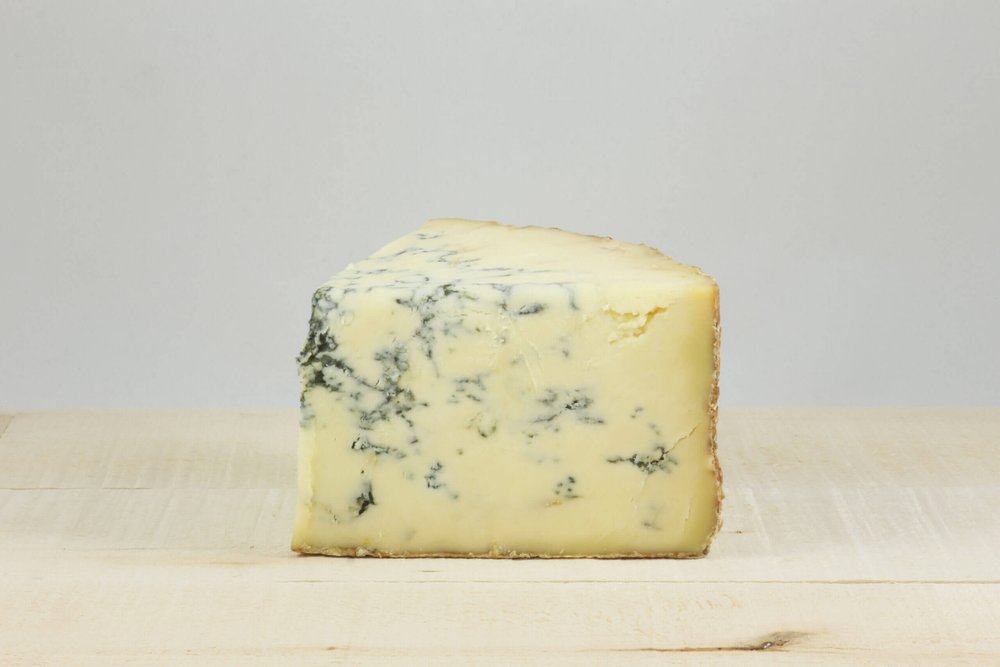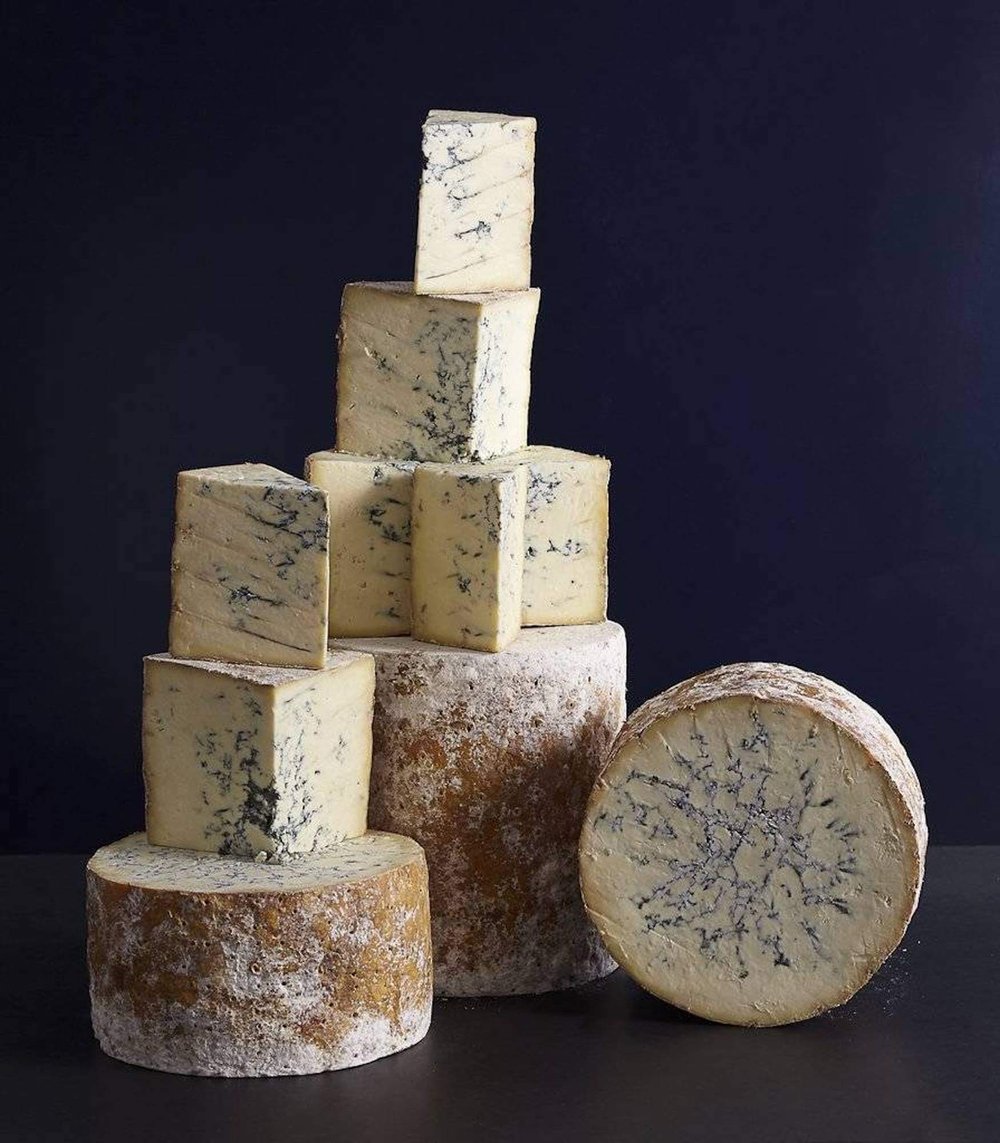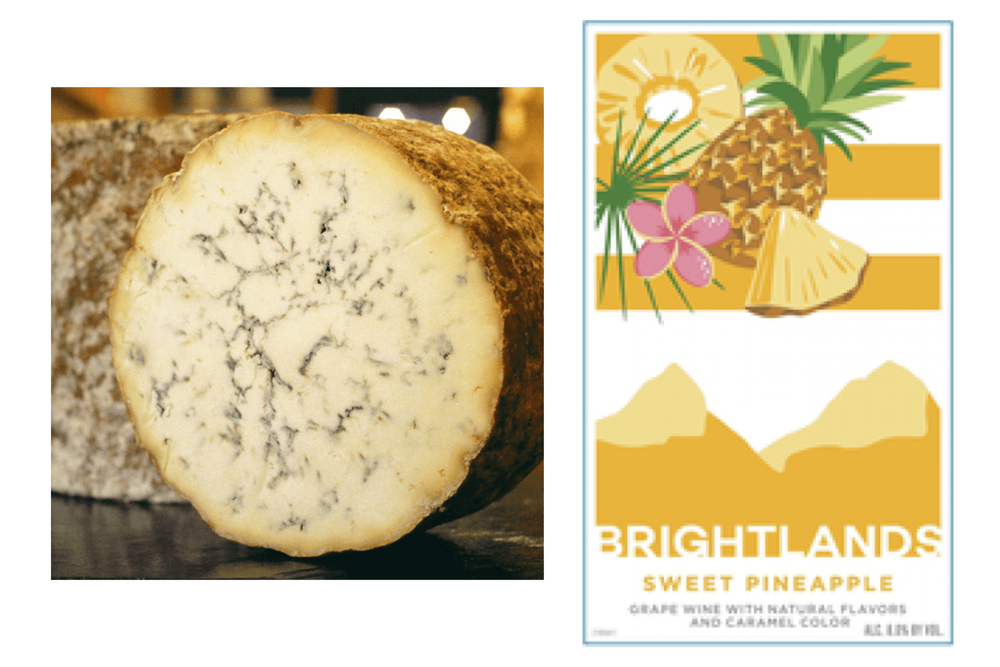In our new series of cheese profiles, we further examine those cheeses that have been called out as best sellers from places in our “Cheese Shops We Love” series. Next up, the classic, iconic English blue, Stilton.

People who love blue cheeses really love them, but with as many of 35% of the population of Great Britain, the birthplace of one of the most iconic blues, listing it among their most hated foods, it’s a triumph for blue lovers everywhere to learn that a blue cheese made the best-seller list for any cheese shop, even one thousands of miles away from its origin. Such is the case with Colston Bassett Stilton, arguably one of England’s best-known cheeses, which was called out by Richard and Danielle Sutton of New Orleans’ St. James Cheese Shop as one of their top 3 sellers in our Cheese Shops We Love series. (From one blue lover to another, whatever you’re doing down there in New Orleans, keep up the good work!)

What is Stilton?
Notably, for a cheese to be called Stilton it doesn’t have to be a blue cheese, as white, unveined Stilton also exists. However, since the bestselling cheese in question here is a blue Stilton, we’ll focus on the what, when, and how of Stilton as we best know it, in its true blue form.
Stilton is a pasteurized, English blue cheese that has European PDO name protection, (even post Brexit,) that must be made in the counties of Derbyshire, Leicestershire, or Nottinghamshire, in what is about the dead center of England. Of note, while Stilton is basically always made from cow’s milk, the animal milk isn’t specified in the PDO restrictions, only that it be locally sourced and pasteurized. (Sounds like an opening for sheep Stilton to rival Roquefort, amiright?) Also of note, the actual village of Stilton for which the cheese was first named actually falls outside of permitted counties for Stilton production by modern PDO standards.
History of Stilton
Blue cheeses were believed to have been developed many centuries BC, in caves where ambient cultures created blue veining. Among the oldest European blues including Roquefort and Gorgonzola, Stilton is a relative youngster, but of no less importance for blue aficionados. Varying sources credit several cheesemakers as possible founders of Stilton, but all sources point to the early 1720s for its inception, and make mention of the Bell Inn in Stilton, Huntingdonshire, as the spot where the notable blue-veined cheese was served to travelers from London on the Great North Road, securing its infamy. Daniel Dafoe wrote of Stilton in his travel memoir of 1724, referring to it as “our English Parmesan.”
How Stilton is Made
According to the (blue) Stilton PDO, Stilton must be made from locally produced and pasteurized milk from the 3 permitted counties, be unpressed, made in a traditional cylindrical shape, develop a natural rind, and have blue veins radiating from the center as a result of piercing during affinage. Only 6 creameries have a license to produce Stilton according to the PDO guidelines: Colston Bassett, Tuxford and Tebbutt, Websters, Long Clawson, Cropwell Bishop, and Hartington Creamery.
Prior to 1992, pasteurized milk was not a requirement for the PDO, and Colston Bassett was one of the creameries at the time to be making Stilton from flavorful, raw milk. Since 2006, a traditional recipe, raw milk Stilton-style cheese dubbed Stitchelton has been made by Joe Scheider of Collingthwaite Farm, another best seller as identified by Brooklyn’s Campbell & Co.
Stilton Tasting Notes
Richard Sutton of St. James Cheese Shop describes Stilton as having “strong, savory, and meaty notes and complexity of flavor along with a rich and creamy texture that nonetheless crumbles right in your mouth.” Murray’s website notes its “fudgy, buttery crumble with a mineral tang imparting a piquant yet sweet pepperiness.”
Stilton Pairings

Stilton is privy to one of the most iconic, historical cheese and wine pairings, so much so that it’s almost impossible to say Stilton without thinking “Port and Stilton.” This is a holiday treat for the 65% of Britons who don’t consider blue cheese to be a hated food, dating back to times when all foods had a stronger sense of seasonality, and the Stilton that had been put to the caves during the summer milking season was coming to readiness around Christmas. Pears also feature heavily in the holiday Port and Stilton matchup in the U.K. For a unique and unexpected sweet wine pairing, match Stilton with Brightlands Wine Co. Sweet Pineapple, a New York International Wine Competition 2022 Gold Medal Winner.
